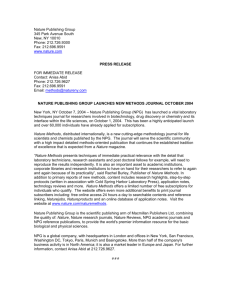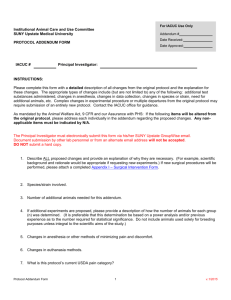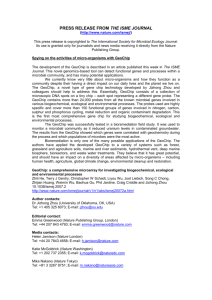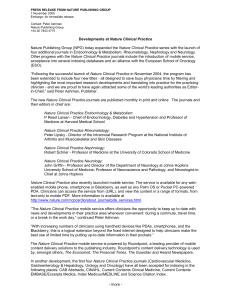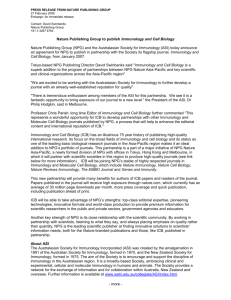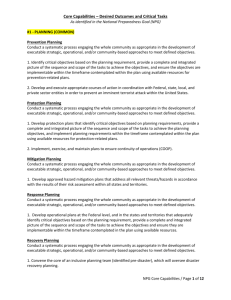COMPARISON OF COOLANT PARAMETERS
advertisement
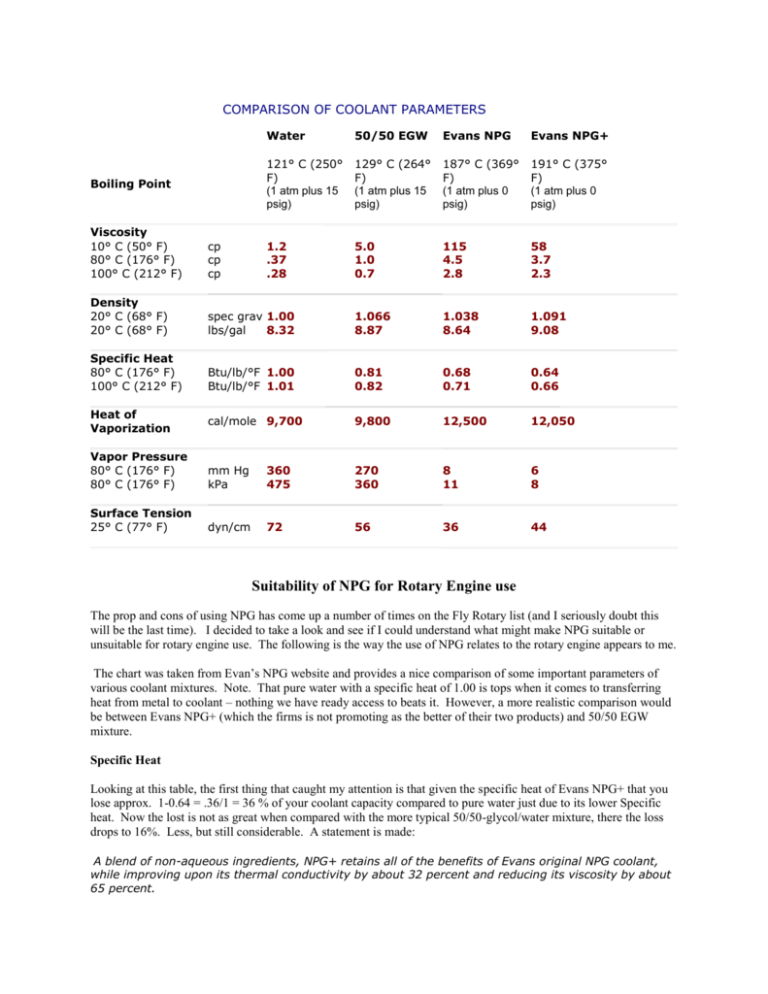
COMPARISON OF COOLANT PARAMETERS Boiling Point Water 50/50 EGW Evans NPG Evans NPG+ 121° C (250° F) (1 atm plus 15 psig) 129° C (264° F) (1 atm plus 15 psig) 187° C (369° F) (1 atm plus 0 psig) 191° C (375° F) (1 atm plus 0 psig) 1.2 .37 .28 5.0 1.0 0.7 115 4.5 2.8 58 3.7 2.3 Viscosity 10° C (50° F) 80° C (176° F) 100° C (212° F) cp cp cp Density 20° C (68° F) 20° C (68° F) spec grav 1.00 lbs/gal 8.32 1.066 8.87 1.038 8.64 1.091 9.08 Specific Heat 80° C (176° F) 100° C (212° F) Btu/lb/°F 1.00 Btu/lb/°F 1.01 0.81 0.82 0.68 0.71 0.64 0.66 cal/mole 9,700 9,800 12,500 12,050 Vapor Pressure 80° C (176° F) 80° C (176° F) mm Hg kPa 360 475 270 360 8 11 6 8 Surface Tension 25° C (77° F) dyn/cm 72 56 36 44 Heat of Vaporization Suitability of NPG for Rotary Engine use The prop and cons of using NPG has come up a number of times on the Fly Rotary list (and I seriously doubt this will be the last time). I decided to take a look and see if I could understand what might make NPG suitable or unsuitable for rotary engine use. The following is the way the use of NPG relates to the rotary engine appears to me. The chart was taken from Evan’s NPG website and provides a nice comparison of some important parameters of various coolant mixtures. Note. That pure water with a specific heat of 1.00 is tops when it comes to transferring heat from metal to coolant – nothing we have ready access to beats it. However, a more realistic comparison would be between Evans NPG+ (which the firms is not promoting as the better of their two products) and 50/50 EGW mixture. Specific Heat Looking at this table, the first thing that caught my attention is that given the specific heat of Evans NPG+ that you lose approx. 1-0.64 = .36/1 = 36 % of your coolant capacity compared to pure water just due to its lower Specific heat. Now the lost is not as great when compared with the more typical 50/50-glycol/water mixture, there the loss drops to 16%. Less, but still considerable. A statement is made: A blend of non-aqueous ingredients, NPG+ retains all of the benefits of Evans original NPG coolant, while improving upon its thermal conductivity by about 32 percent and reducing its viscosity by about 65 percent. However, the chart indicates a 7.5% lessening of the specific heat of the NPG+ compared to the NPG, so its difficult to understand where the reported 32% improvement in heat removal comes from unless the lower viscosity of the NPG+ improves its flow rate (over the older NPG) and therefore heat removal. The webpage also refers to the removal of air from the coolant fluid, this of course is good – but there is no comparison to how much better than the 50/50 mixture. Another thing that raises a question is nucleated boiling. Due to the much higher boiling temperature of NPG it would seem that nucleated boiling would be lessened. Yet, some literature on heat transfer indicates that nucleated boiling (microscopic bubbles of gas created by the phase change from a liquid to a gas – which absorbs tremendous amount of heat and promotes heat transfer from the metal to the liquid) is a very important heat transfer mechanism in engines. Viscosity Also note the viscosity of NPG is considerably higher than water or a 50/50 EGW mixture. This means more power is required to pump the NPG at the same rate – also note that they measure NPG viscosity at higher temp 191C Vs 121C for water – this means the viscosity difference is even greater at a common lower temp of 250F. Since the typical water pump is not a positive displacement pump, the higher viscosity means you will flow less NPG than the 50/50 mixture for the same pump speed. Another thing worth considering is what lower temp do to the viscosity and does this further reduce the initial flow rate (until it’s warmed up). Might be a factor for those in cold weather areas. Given the much higher viscosity of NPG, a higher flow rate is certainly going to take more coolant pump power than the 50/50 solution. Both due to a higher flow required and the higher resistance (viscosity) to pumping. Now if you maintain the same flow rate for NPG, then given its lesser specific heat you will be removing less heat from the engine. This means the temperature of the NPG may give you a nice comfortable feeling, seeing - say 180F on the coolant temp gauge – but your block metal will have a higher temperature than with the 50/50 mixture. This is because the NPG is unable to absorb as much heat as that same flow of 50/50 mixture. Now if your engine block can tolerate the higher heat range then you are not likely to incur any damage. Vaporization and Vapor Pressure The heat of vaporization of NPG does indeed indicate it would take more heat (calories/mole) than water to make NPG boil compared to the 50/50 mixture. Also the vapor pressure figures indicates that much less coolant pressure is generated by the same temperature by NPG. So these are points in favor of NPG. Conclusion So here is how it looks to me. On the plus side, NPG does not create much pressure in the coolant system and is unlikely to boil over (both certainly a nice safety consideration). It is also apparently much less toxic than Ethelene gyclo and is even used in the food industry. It apparently has good corrosion protection and has a long life. On the minus side the lower specific heat means you must either pump NPG at a faster rate to remove the same amount of heat as the same flow of water and/or you must heat the NPG to a higher temperature. Lower 13B Permissible Heat Range However, given the lower permissible heat range for the 13B rotary engine, it is my opinion that you run the risk of overheating your engine at the time while your coolant temperature appears within a permissible range on your temperature gauge. The rotary engine limits are 180F coolant out of the block and 210F oil temp into the block. Many reciprocating engines can withstand temps in the 240F and higher range without damage. To successfully use NPG in a rotary, it is my opinion that you must increase the real flow rate by at least 16% over the 50/50 mixture and be prepared for more power consumption by the coolant pump (may take two v belts under higher tension or more likely a clogged belt and pump pulley) due to the fluids much higher viscosity. I would expect flow resistance in the narrow tubes of GM core type radiator to be particularly restrictive to NPG flow. Now in race engines where combustion efficiency is critically important, having the engine block remain at a higher operating temperature has considerable benefits. So it is not surprising that NPG properties appear to have significance in racing circles. It would appear that many reciprocating engines, such as Subaru, might use NPG with less risk due to their ability to withstand higher metal temperatures than the rotary. The typical iron/aluminum block racing engine is designed to operate at higher metal temperatures that the 13B. Again I am not knocking NPG - in reciprocating engines which can stand higher metal temperatures, there appears to be benefits derived from its use. However, you would appear to need to consider a faster flow rate (higher pump speed). Cost is a minor factor since you would not likely use more than 2 gallons and it reportedly has a long life. In my opinion, safety factors from it not boiling over is of lesser benefit to the aircraft (don’t see many aircraft parked beside the runway while someone takes the cap off a hot radiator) than to automobiles and especially race environments. There is one factor I did not find mentioned and that is the flashpoint of NPG – would it ignite if it came in contact with a hot exhaust? The Ethel Glycol used in the 50/50 mixture is by itself flammable – but is virtually impossible to ignite as part of a 50/50 water solution. Propylene Glycol has a flash point of 130C (266F) and generally the ignition point is a few degrees above the flash point of a liquid. So it would certainly appear that pure glycol (of either type) could ignite on a hot exhaust header. The bottom line however is, I would be hesitant to use NPG in a rotary engine. The higher boiling temperature and low-pressure generation are, in my opinion; small benefits for a well designed and constructed cooling system for the rotary engine using a 50/50 solution. I think if you attempted to use it, you may well see lower coolant temperatures while the engine temperatures may at the same time be exceeding that suggested by Mazda. At a minimum, plan on needing a higher flow rate for the NPG Vs the 50/50 mixture. In summary: 1. The lower permissible operating temperature of the 13B rotary engine would appear to make it less suited to benefit from the properties of NPG. 2. If you are going to use NPG, I would strongly suggest: a. That you be prepared to increase your coolant pump RPM and increased power required b. That you instrument (CHT probes) your aluminum rotor housings for metal temperature readings c. That you insure any possible coolant leaks are unlikely to hit hot exhaust pipes. As stated earlier, this is my take on NPG use in a rotary engine and does not nor is intended to imply that NPG is not useable for reciprocating engines. Ed Anderson Some additional information on pumping requirements for 100% glycol are commented on in the following pages. Attached is a table found at another website comparing properties of 100% Ethylene and Propylene Glycol solution to a 50/50 mixture. Table 2. Glycol Properties Ethylene Glycol Propylene Glycol Heat transfer @180F with no increase in flow rate 20% solution .96 .97 50% solution .87 .90 Flow Rate Correction Required (with no change in pump curve) 100F 116% 140F 115% 180F 114% 110% Pump Head Correction Required (with increase in flow) 100F 149% 140F 132% 180F 123% 123% Specific Gravity @ 1.125 -1.135 1.045 -1.055 STP Pounds/Gallon @ 60 9.42 8.77 pH (of glycol 9.3 9.5 concentrate) Note: Except as indicated, comparisons are of 50% glycol solution to water. Pump Requirements Here are some observations I found regarding pumping requirements for a 100% glycol solution veruses a 50/50 mixture. It gives a example of a 60 GPM pump (using a 50/50 mixure) being used to pump 100% glycol and it appears that the flow rate must be increased by 10% to just to compensate for the specific heat differences. It also shows that additional pump head (pressure) is required due to the extra friction created by the glycol and it appears that a 32% increase in pump capacity is required to compensate for the viscosity difference with the increased flow required for the 100% glycol solution. Since glycol is more viscous and less thermally efficient than pure water, pump selection must account for changes in heat transfer fluid performance. By properly applying two correction factors, it is possible to determine pumping requirements using a standard pump curve. To compensate for the difference in heat transfer characteristics, it is necessary to multiply the design flow rate by a factor obtained from Table 2. The resultant product is the corrected design flow rate. For example, if the design temperature is 180F, design flow is 60 GPM, and a 50% propylene glycol solution is used, a correction factor of 1.10 must be used. (110% from Table 2 divided by 100%) The corrected design flow rate equals 60 GPM x 1.10, or 66 GPM for Propylene Glycol. To compensate for the viscosity differences, the system design head loss must be modified by the appropriate factor from Table 2. The result, the corrected design head loss, accounts for the additional pump head required due to the extra friction created by the glycol. For example, in a 180F propylene glycol solution with 30 ft of design head loss, the corrected head loss should equal 30 ft x 1.32, or 39.6 ft. To select the properly sized pump, simply enter the unmodified pump curves using the corrected design flow rate and corrected design head loss. For additional information on pump selection techniques, contact your local pump distributor.
